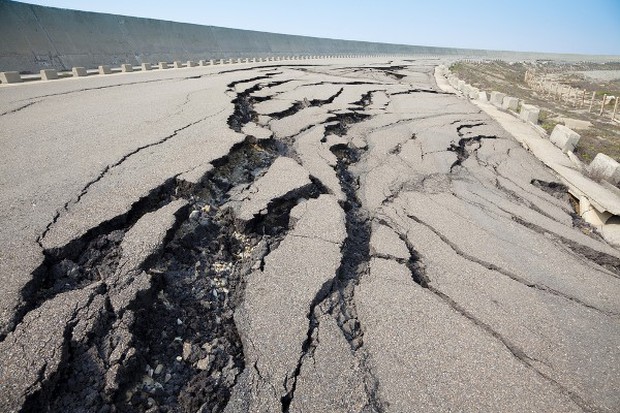A new method that helps us measure the intensity of very large earthquakes in just a few minutes.
According to NDTV, scientists have developed a new method to help us quickly estimate the magnitude of very large earthquakes, starting at 8.5 magnitude or greater. This method is very important for determining the first earthquakes.
Now we know the magnitude of earthquakes thanks to seismic waves. A new analysis of the largest earthquake in Japanese history, Tohoku in March 2011, has helped scientists find a new method of seismic measurement.
So, immediately after an earthquake, we can record instantaneous gravitational interference before detecting seismic waves. This new method can accurately predict vibrations of magnitude 9 or greater in just a few minutes. This is an extremely impressive achievement compared to the 3 hours of time taken by the Japan Meteorological Agency to determine Tohaku’s magnitude 9.1.
Scientists have just announced a new method of seismic measurement using gravitational signals on Earth
Even at the scene, gravitational changes are difficult to detect, so scientists had to try to observe weak gravitational signals to find their origin.
Because they are quite sensitive to the magnitude of earthquakes, these gravitational signals or gravity waves are very important in determining the early presence of a large earthquake. According to the researchers, when the earthquake occurs, the balance of power on the Earth will be greatly disturbed and the seismic waves will begin to propagate. Seismic waves traveling at a speed of 3 to 10 km would interfere with the Earth’s gravitational field and generate another type of signal traveling at the speed of light (300,000 km / s).
This type of signal can be detected with seismometers 1 to 2000 km from the epicenter in just 2 minutes before the seismic wave. The extremely fast speed of a newly formed wave gives us enough time to record it before it is taken over by the seismic wave.
During the Tohaku earthquake in 2011, scientists discovered a new type of gravity wave based on data from 10 seismographs located between 500 and 3,000 km from the epicenter.
According to the researchers, two factors make up this new type of gravity wave. The direct factor is that the gravitational change at the seismometer site will change the equilibrium position in the gauge mass. The indirect factor is the gravitational changes all over Earth that will interfere with the balance of power and produce new seismic waves.
These two factors indicate that the new type of gravity waves are very sensitive to large earthquakes. As a result, they will help us to quantify the magnitude of major earthquakes more quickly.
This work is carried out by researchers from the University of Paris Diderot in France, from the famous California Institute of Technology (Caltech) in the United States. The findings were published in the journal Science, following another separate study presented at the annual meeting of the American Geological Society.
At the meeting, there was a theory that in 2018 the world would witness a series of earthquakes due to the Earth’s self-rotation occurring at a slightly slower speed. Therefore, these new inventions in earthquake detection and prevention are very important.
The new challenge for researchers is to detect gravity waves in earthquakes with a magnitude of less than 8.5. Because below this threshold, the gravity wave is too weak compared to the seismic wave, which makes it more difficult to recognize.
The Tohaku earthquake
The Tohaku earthquake that occurred in March 2011 was recorded as the largest earthquake in Japanese history. It was the earthquake that caused the massive tsunami that killed thousands of people and collapsed three nuclear reactors at the Fukushima Daiichi power plant. According to NDTV, the total number of people killed by Tohaku was 12,000.
Physics concepts at work
A planet’s gravity field is the medium in which the planet exerts gravity around it. The gravity field is a special case of the gravitational field, the concept of the medium in which an object exerts gravity around it.
Gravitational wave (gravitational wave): A type of wave formed from vibrations that bend space-time in the universe, for example, a merger between two black holes is the interaction between objects of enormous mass. Gravitational waves originate from Einstein’s general theory of relativity and have been confirmed by scientists at the LIGO interferometer observatory in recent years.
Gravity Wave: A case of gravitational waves in a planet, vibrations change the environment there. Gravity waves that can be seen with the naked eye are waves on seas, lakes, tides, tsunamis, winds blowing on a mountain, waves in clouds … created when the atmosphere or the surface of the lake, the surface of the sea are disturbed.



